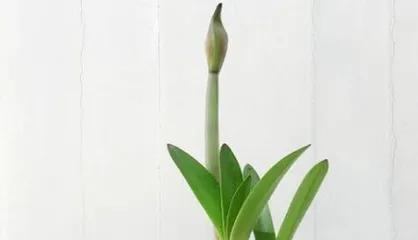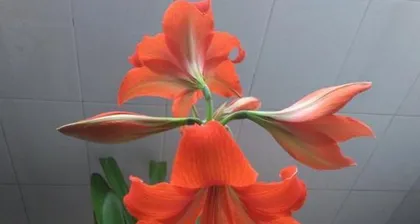Hippeastrum is a plant of great ornamental value, with stunningly beautiful flowers that are deeply loved by people. However, many people have doubts about whether Hippeastrum is toxic and do not know how to care for this plant indoors. This article will detail the toxicity and indoor care techniques for Hippeastrum, hoping to provide a useful reference for enthusiasts.

I. Overview of Hippeastrum
Hippeastrum, scientifically known as *Hippeastrum*, is a perennial herbaceous plant in the Amaryllidaceae family. It is native to South Africa and is now widely cultivated around the world.
II. Toxicity of Hippeastrum
The leaves, stems, and roots of Hippeastrum contain toxic flavonoid compounds. These components are toxic to humans and animals to some extent. If ingested or over-contacted, they may cause symptoms such as vomiting, diarrhea, and dermatitis. We need to be vigilant when handling Hippeastrum.

III. Growing Environment for Hippeastrum
Hippeastrum prefers a warm and humid environment, with an optimal growing temperature of 20°C-25°C. At the same time, they need plenty of sunlight and moderate water, preferably keeping the soil moist but not overly wet.
IV. Choosing the Right Soil
Hippeastrum requires nutrient-rich, well-draining soil. We can mix materials such as leaf mold, peat moss, and perlite to achieve good aeration and water retention.
V. Selecting a Suitable Pot
Hippeastrum can be grown in terrariums, pots, or hanging baskets. Choosing a suitable pot can be beneficial for the plant's growth and development.

VI. Watering Techniques
Hippeastrum needs moderate water to maintain its growth and development. We can use the soaking method or the sprinkling method for watering. When watering, be careful not to pour it directly on the flowers to avoid damage.
VII. Fertilization Methods
During its growth period, Hippeastrum needs a moderate amount of nutrients to support its development. We can apply a suitable fertilizer, but be careful not to overdo it to avoid toxicity.
VIII. Maintaining Good Ventilation
Hippeastrum requires a well-ventilated environment to maintain healthy growth. At the same time, they are sensitive to dry environments and need to maintain a certain level of humidity.
IX. Pest and Disease Control
Hippeastrum is susceptible to common pests and diseases such as aphids, powdery mildew, and root rot. We can use appropriate pesticides for prevention and treatment.
X. Propagation of Hippeastrum
Hippeastrum can be propagated in various ways, such as division, seed sowing, and leaf cuttings. Different propagation methods require different techniques and methods.
XI. Selecting a Suitable Variety
Hippeastrum has many different varieties, each with unique flower colors and shapes. We can choose a variety that suits our personal preferences.
XII. Enhancing Ornamental Value
The ornamental value of Hippeastrum can be improved through methods like pruning and placement. Pruning can make the plant neater and more beautiful, while placement can be coordinated for different occasions.
XIII. Safety Precautions
When growing Hippeastrum, it is important to pay attention to safety to avoid accidental ingestion or contact with the plant's toxic parts. At the same time, when performing operations such as fertilizing and pest control, it is also important to protect your own health.
XIV. Monitoring the Plant's Growth Status
We need to regularly monitor the growth status of Hippeastrum, observing its leaves, flowers, stems, and other parts for any abnormalities. Timely detection of problems allows for appropriate measures to be taken.
XV.
Hippeastrum is a plant of great ornamental value, but it contains toxic components, so safety precautions are necessary. At the same time, we also need to master some planting techniques to allow Hippeastrum to grow healthily and display its most beautiful flowers.